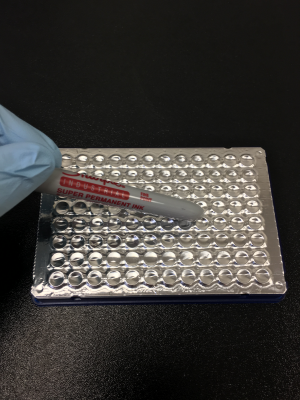This shipping protocol is for sending raw samples, DNA, and amplicons to MARS for processing. If you have any questions or concerns please contact us before shipping your samples! Please remember to label everything you send us! Tubes should be labeled with the barcodes that we send you. Plates need to be labeled with your name (and PI name if applicable), project name, and date.
Our address:
MARS
UConn CORE
67 N Eagleville Rd
ESB 309 Unit-3032
Storrs, CT 06269-3032
*Make sure to use plenty of dry ice or freezer packs frozen at -80 to keep your samples frozen for 2-3 days even though you are shipping overnight!*
DNA and Amplicon Submission
DNA and Amplicons must be shipped in 96-well plates. Please arrange your samples in *columns* (A01, B01, C01…)
We use Eppendorf twin.tec® PCR Plate 96 (Cat. No. 951020401) or USA Scientific TempPlate® Full-Skirted 96-Well PCR Plate (Item #1402-9800), as they work well with our robots. If you want to use another 96-well plate, just let us know the brand and catalog number for the plates so that we can obtain the labware necessary to use with our liquid handling robot. We much prefer full skirted plates over semi-skirted or unskirted. We use foil seals in the lab with no well to well contamination (see below how to use and package for shipping). But some users have had problems with well to well contamination during shipping if the plates thaw in transit. If you are shipping from a distance and your samples are likely going to be flown at some point in their journey, you may want to use strip caps.
- Place a foil seal securely on top of the plate (ThermoFisher Adhesive PCR Plate Foils, Cat. No. AB0626).
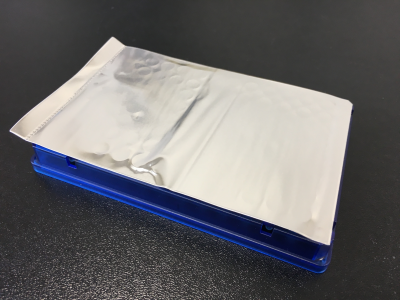
- Use a roller with a moderate amount of force to adhere the seal to the plate. Make sure to use the roller in opposite directions.
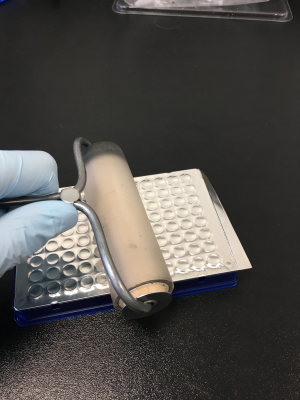
- Ensure that the seal is secure by checking for air bubbles and wells that are not fully sealed.
- Cut two pieces of cardboard to a size slightly larger than the plate. This will prevent the wells from being punctured through transit.
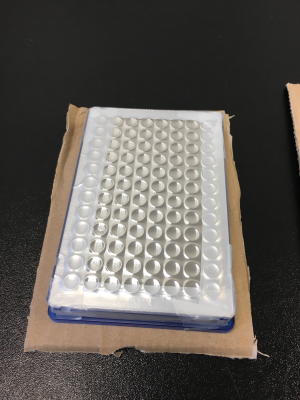
- Place the cardboard on the top and bottom of the plate and tape them together.
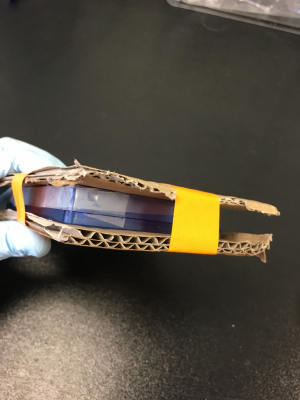
- Place each plate in a separate seal-able bag to prevent contamination if a plate does leak.
Ambient temperature shipping
It is possible to ship DNA at ambient temperatures, however our experience suggests that mixing between samples is more common when the samples are not frozen. If shipping on dry ice is not possible, we recommend you use strip caps rather than foil seals. You may also opt to precipitate your DNA and ship it dry. Contact us with questions.
Raw Sample Submission
Raw samples must be shipped in MARS’ supplied 2mL bead beating tubes with barcoded labels attached.
To obtain 2mL tubes and barcodes, call (860)-486-1417 or contact us .
- Place 0.1-0.25g sample in the 2mL tube containing beads. We extract the sample exactly as you send it, please don’t send us any more than 0.25g of sample. Make sure that the sample tubes have been properly closed and the barcoded label is firmly attached around the tube.
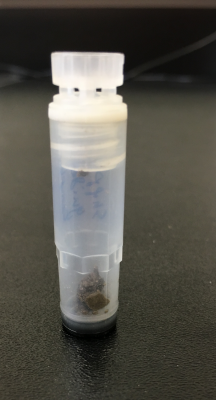
- For small fecal pellets (such as mouse), 1 pellet is sufficient.
- For medium fecal pellets (such as rat), 0.5-1 pellet is sufficient.
- For large fecal pellets (such as rabbit), <0.5 pellet is sufficient.
- For liquid/pipettable samples, submit no more than 250μL.
- As a general rule-of-thumb, do not submit all of the sample that you have!
- Record the sample barcode in the Sample Barcode (Column B) for the corresponding sample.
Packing Directions
- All raw samples submissions should be shipped on dry ice or freezer packs that you’ve frozen at -80 in a styrofoam container. Make sure to have excess ice as samples can get stuck in transit longer than anticipated.
- Place samples in dry ice/ice packs and top with more. Fill the excess space between the dry ice and the lid with paper or packing materials to minimize movement within the styrofoam.
- Ship samples at the beginning of the week (Monday or Tuesday) and do not ship over a US holiday weekend.
- Place the styrofoam container into a larger shipping box. Pack the box as needed with packing materials to secure the styrofoam container within the box.
- Seal the cardboard box with tape.
Shipping guide based on Earth Microbiome Project Shipping Guide.
